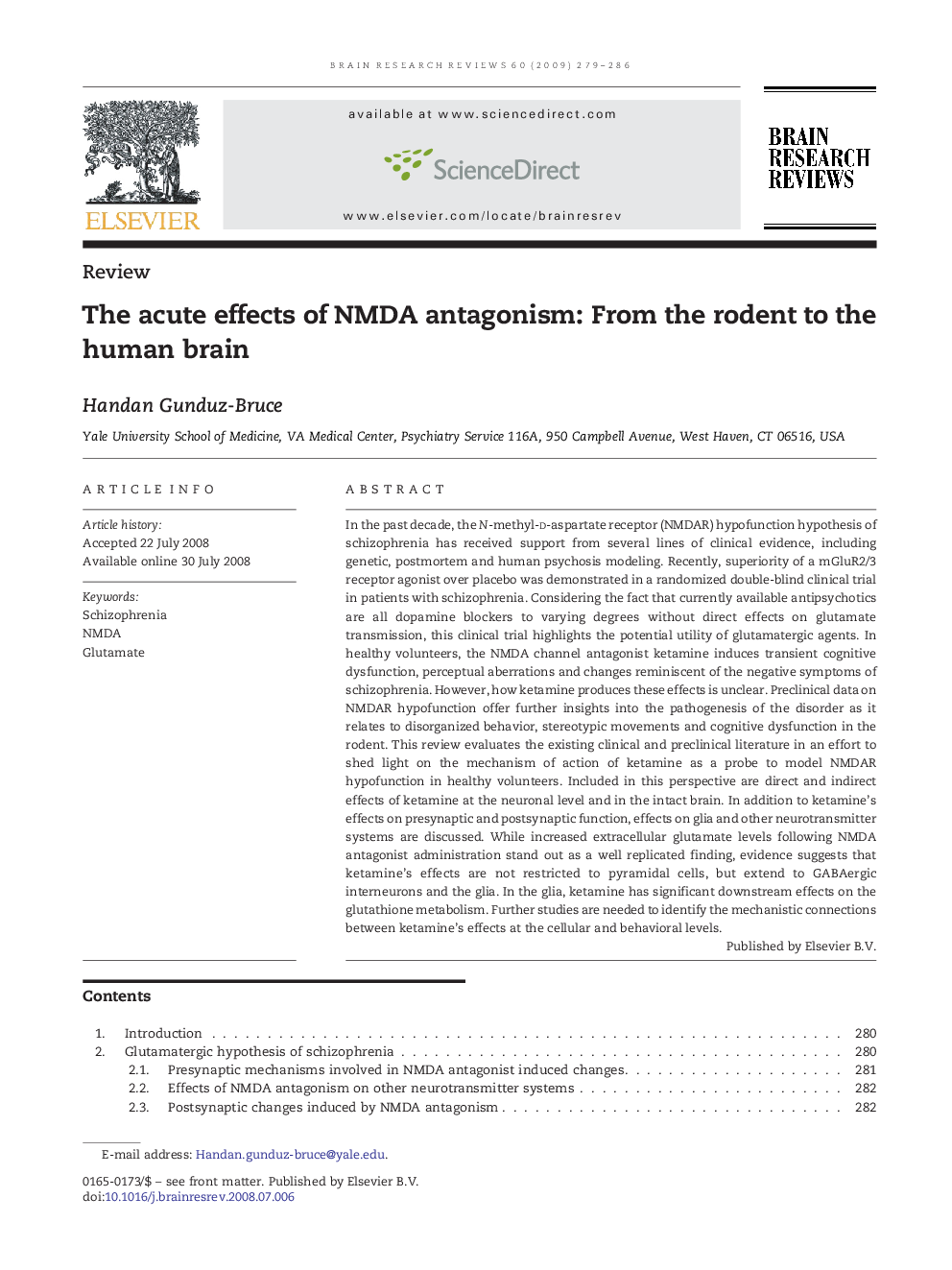| کد مقاله | کد نشریه | سال انتشار | مقاله انگلیسی | نسخه تمام متن |
|---|---|---|---|---|
| 4333684 | 1614474 | 2009 | 8 صفحه PDF | دانلود رایگان |

In the past decade, the N-methyl-d-aspartate receptor (NMDAR) hypofunction hypothesis of schizophrenia has received support from several lines of clinical evidence, including genetic, postmortem and human psychosis modeling. Recently, superiority of a mGluR2/3 receptor agonist over placebo was demonstrated in a randomized double-blind clinical trial in patients with schizophrenia. Considering the fact that currently available antipsychotics are all dopamine blockers to varying degrees without direct effects on glutamate transmission, this clinical trial highlights the potential utility of glutamatergic agents. In healthy volunteers, the NMDA channel antagonist ketamine induces transient cognitive dysfunction, perceptual aberrations and changes reminiscent of the negative symptoms of schizophrenia. However, how ketamine produces these effects is unclear. Preclinical data on NMDAR hypofunction offer further insights into the pathogenesis of the disorder as it relates to disorganized behavior, stereotypic movements and cognitive dysfunction in the rodent. This review evaluates the existing clinical and preclinical literature in an effort to shed light on the mechanism of action of ketamine as a probe to model NMDAR hypofunction in healthy volunteers. Included in this perspective are direct and indirect effects of ketamine at the neuronal level and in the intact brain. In addition to ketamine's effects on presynaptic and postsynaptic function, effects on glia and other neurotransmitter systems are discussed. While increased extracellular glutamate levels following NMDA antagonist administration stand out as a well replicated finding, evidence suggests that ketamine's effects are not restricted to pyramidal cells, but extend to GABAergic interneurons and the glia. In the glia, ketamine has significant downstream effects on the glutathione metabolism. Further studies are needed to identify the mechanistic connections between ketamine's effects at the cellular and behavioral levels.
Journal: Brain Research Reviews - Volume 60, Issue 2, May 2009, Pages 279–286